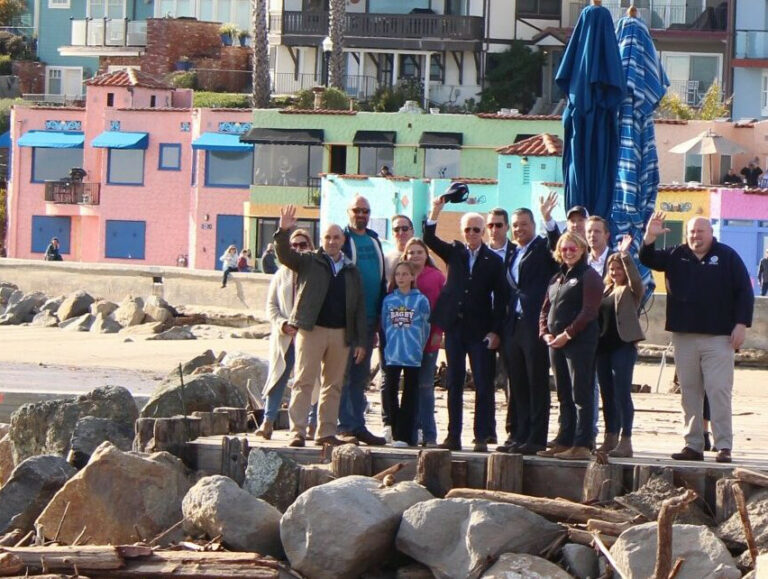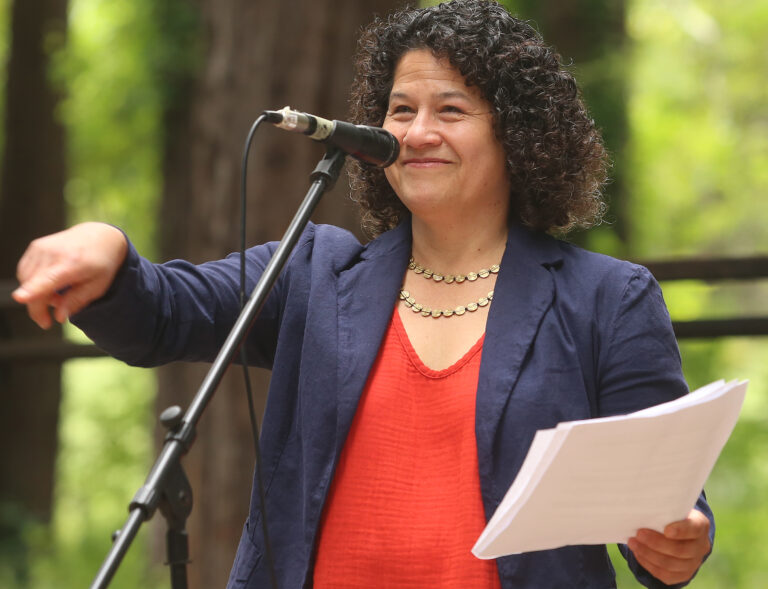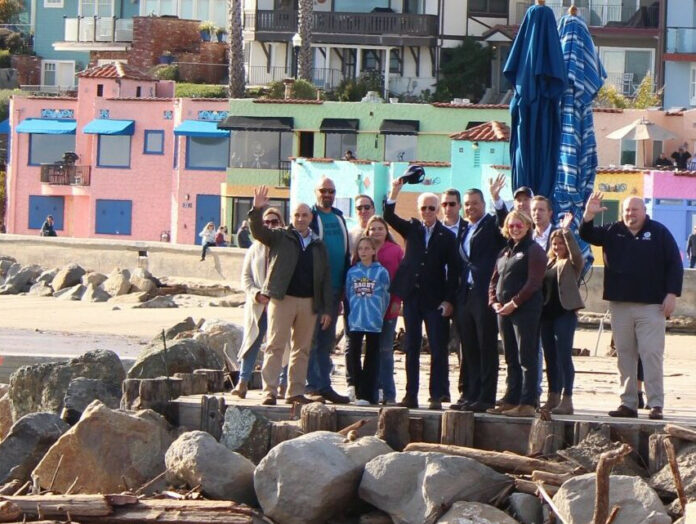Call it a spiritual breakthrough, though not the type that you’d expect at, say, Santa Cruz Zen Center.
Suddenly Surf City, a place famed for its waves, mountain bikes and redwoods—but also craft beer and Santa Cruz Mountain wines—is witnessing a distillery surge.
Collectively Venus Spirits, UBlendIt Inc. and Santa Cruz Spirits are winning shiny international awards, opening new restaurant-bars and developing new products, making right now the most compelling time for local spirits in a long, long while.
Meanwhile a different sort of spiritual awakening is happening with the area’s most time-honored distillery.
Osocalis can stake a claim to being one of the most carefully crafted and outright uncommon liquors on the planet, and it happens to be distilled in Soquel. Now Osocalis—named for Soquel’s original Native American title—has embarked on a reinvention that will make its unique brandies that much rarer.
Over the course of the pandemic, owner-operators Dan Farber and Jeff Emery decided, in short: Less is more. Rather than pursue any sort of growth model, they pivoted to releasing fewer bottles of bright California brandies to rival Europe’s best Cognacs and Calvados.
Their exacting attention to detail includes hand planting, growing and tending their own grapes—something no other brandy company in the country can claim—to handpicking and personally aging the oak to mature their spirits, sometimes for decades.
“There’s art in growing, art in winemaking, art in distillation, art in maturation, art in blending, art in packaging,” co-creator Dan Farber says. “Every step of the way you can be artful and careful.”
When their brand-new label and look debuts later this year, it will appear on only 300 bottles, for the entire country.
So good luck getting your hands on any, if you do have the cash for it, which is worth noting, as one bottle could easily fetch $1,000. (Price is TBD.) On top of that, all the bottles are pretty much spoken for by elite bars, select restaurants and individual collectors.
The good news there: While Osocalis will prove hard to get, the dynamic liquors from Santa Cruz Spirits, Ublendit and Venus Spirits are a lot easier to acquire.
Here they are, in order from youngest to oldest:
Santa Cruz Spirits
A funny thing happens when Good Times gets to talking liquor with one of Santa Cruz Spirits’ four partners, Paul Locatelli. There’s a lot more discussion of everything but liquor—modeling, sports and sex included.
But eventually the origin story emerges. He describes four friends who enjoy vodka and reasoned, “Why not brand some under the Santa Cruz name?”
“Everyone loves Santa Cruz,” Locatelli says. “We figured if it sells, great. If it doesn’t, we’ll drink it and pass it out. Then it really took.”
Two of those friends are brother Brian and Kevin Dueck, proprietors at Pointside Meat Shop, who carried it first. Flash forward a couple of years and it now appears at 20 local venues listed on its website, including El Palomar, Pleasure Point Liquors and Santa Cruz Warriors Stadium.
Last month it also appeared in a somewhat stunning place: on stage at the 2023 San Francisco World Spirits Competition, arguably the most prestigious liquor tasting showdown in the world, and the oldest and largest of its kind. SCS’s original flagship vodka—they also do grapefruit, lemon, cucumber and mandarin—earned double gold, which means every single judge gave it top grades.
Santa Cruz native Kaia Myall designed the label. “I started by throwing in recognizable icons like the harbor lighthouse, the beach, the fishing boat, the pelican, the shark fin,” she says. “I wanted to make it very Santa Cruz looking.”
The non-liquor talk emerges with mention of “The Real Estate, Sex & Gossip” podcast, which Locatelli—a one-time Versace model—hosts with fourth spirits partner and fellow real estate pro Brian DeDeigo.
“The podcast is [DeDeigo’s] last attempt to force Paul to divulge all the dirty secrets that he is convinced are being hidden,” the Apple Podcasts Preview reads. “GOSSIP Rule #1: Speak the truth. Rule #2: EVERYTHING is on the table, simply apply Rule #1 before detonation.”
Locatelli’s description of the show seems to work for their approach to vodka too.
“We don’t give a s***, we want to have fun,” he says. “I know you can’t print that, but you can quote me on that.”
santacruzspiritsco.com
UBlendIt
Another Santa Cruz meteor just landed atop the San Francisco World Spirits Competition.
Hideout Vodka beat out the likes of industry heavies with reputations—and price points—far heftier than their own, including Ciroc, Absolut, Chopin and Stolichnaya.
Hideout retails for as little as $10, compared to twice that for the runners up.
That marks a double win for its parent company UBlendIt of Scotts Valley, because that’s the contract distiller who makes Santa Cruz Spirits vodka too, working with their principals to develop a profile they like. (In Santa Cruz Spirits case, that was filtering and aerating for peak smoothness.)
The two victories speak to UBlendIt’s double-barreled business plan. They do custom brands for a boatload of Santa Cruz area businesses including the Redroom, Britannia Arms and wharf stars Riva’s Fish House and FireFish Grill (reopening this month). That often involves working with their bartenders on unique expressions that work well in what they feature, like Hula’s Silver, Hula’s Gold and Hula’s Dark Rum in Hula’s tiki drinks.
They also do a bunch of their own products. That ranges from Tres Paraguas 100-agave spirits to Westside Water whiskey, an homage to Santa Cruz. Hideout seltzers represent a more recent addition. Canned cocktails are on the docket down the road.
“We build brands,” co-owner and operator John Spagnola says. “We bring people together around great products at a great price.”
They’re able to keep their prices reasonable by outsourcing the base spirit distilling to established producers like Midwest Grain Products, then they tweak it, proofing it down with the best distilled water they can find, applying their own house recipes and occasional barrel aging at their own facility in Skypark.
That, in turn, has helped land Hideout somewhere perhaps more meaningful than the S.F. International Competition podium, when it comes to profits: the heart of the Las Vegas strip, where it’s now the featured vodka at a phalanx of MGM Properties—a dozen all told, Aria, Bellagio, The Cosmopolitan and Mandalay Bay included.
The star vodka isn’t one of the gargantuan and borderline monopolistic distributors’ brands like Skyy or Absolut, but humble little Hideout.
“It’s an impossible feat,” Spagnola says. “OK, not impossible, because we did it. But to do that out of the gate is incredible.”
ublendit.com
Venus Spirits
There’s a motto that circulates around Venus Spirits: “distillery first.”
With how much else they’ve got going on, attentive souls could be forgiven for calling B.S.
And they’d have a case to make. Note the new Venus Pie Trap which opened in fall with pizza pies, hand pies, sweet pies, bagels and coffee. Right next door sits one of last year’s most anticipated new restaurants, Venus Beachside, which will reopen next month after an extensive remodel. This week Venus even hosted its own job fair to prepare for full operation.
Then there is the original restaurant, Venus Spirits Cocktails & Kitchen, which does bustling business by way of cod croquettes, fried chicken, market salads and craft cocktails next to the distillery space. And the tasting room on the opposite side, where everything from a flight of mini cocktails to restaurant pop-ups make for a lively social scene all its own.
But a closer look reveals the spirits-centric strategy is real, and applies across multiple dimensions.
The distillery sits literally at the center of the brand’s headquarters on High Road. Venus’ wholesale gins, aquavits, whiskeys and agave spirits account for a massive chunk of overall revenue, and are poured from Craft & Commerce in San Diego to Humboldt Bay Social Club in Eureka. Dishes like lobster rolls and baked oysters—coming soon to Beachside in Aptos—merit appreciation, but they are designed to complement the adult beverages, not the other way around.
Like General Manager Tulsi Schneider told me when Venus Kitchen reopened fully in 2021, “Everything we have here is to help accentuate the distillery.”
One tasty update there: tours returned recently, happening 2pm Saturdays and Sundays.
Tasting room manager Tory Leslie leads them, and observes a difference in how it shapes the tasting experience for guests. (Pro tip: Ask her about one of her off-menu drinks, like the Nordic Summer.)
“Sitting in front of someone going through tasting notes and the way it’s made, I see people retain that and want to learn more,” she says. “That’s one of my favorite parts of the job.”
Another indicator that the liquor is the ultimate kicker is how pioneering Venus proves. Venus earned awards for its botanical gins—namely the lavender-laced #01 and herbal orange-tinted #02—before gins hit a major reawakening nationwide. The “California mezcal” made with hyper drought tolerant agave grown near Davis is among the first of its kind, and is but one of a handful of Golden State distillers doing it.
Head Distiller Kayla McIntyre encounters a balance in her craft that Farber of Osocalis would appreciate.
“It is the perfect blend of art and science,” she says. “With just a science background, you might not have the palate or flavor-building skills to make something unique and approachable. You’re crafting something people consume and hopefully makes them happy.
“There is an artistic touch to that.”
venusspirits.com

























